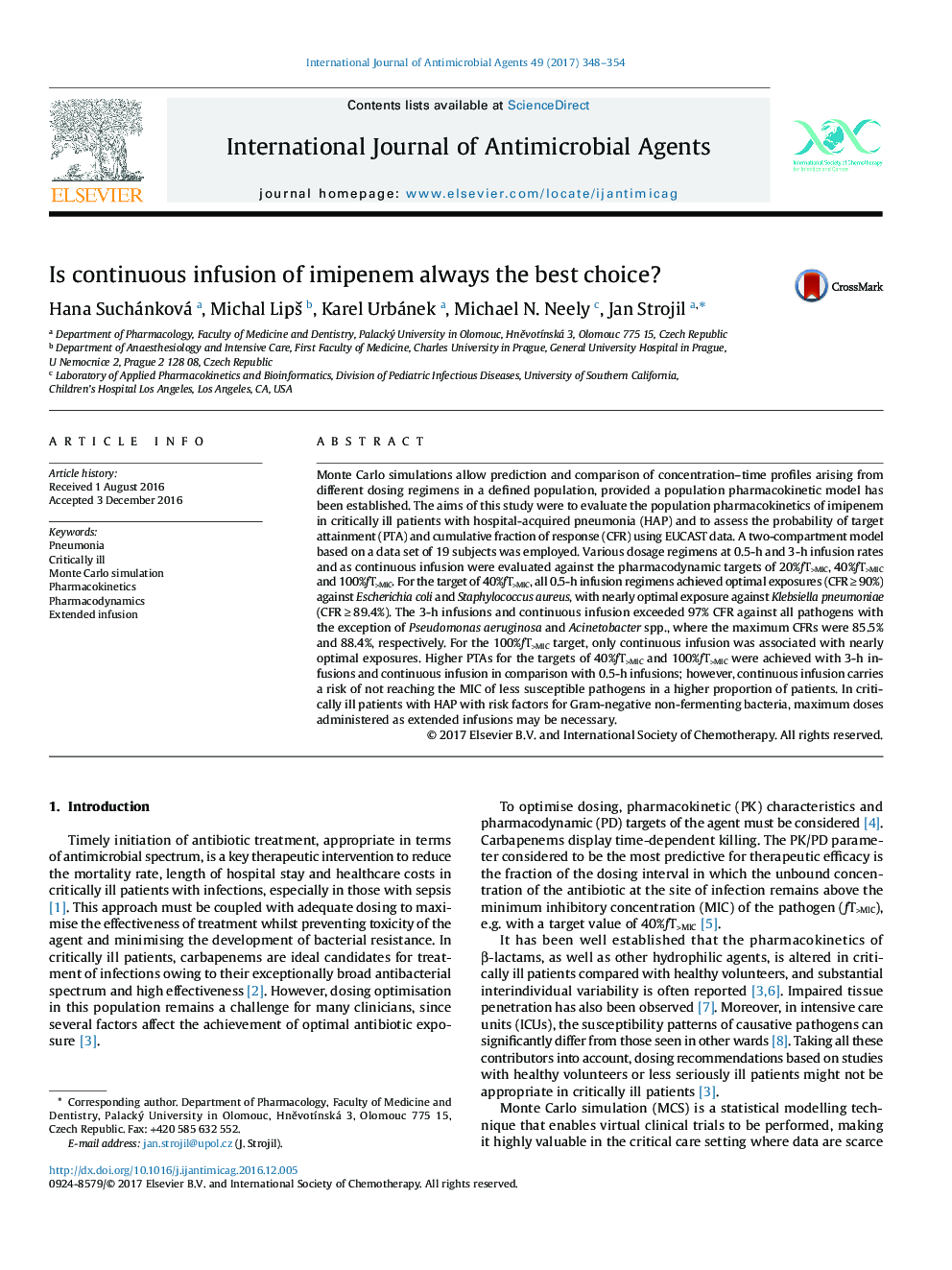| Article ID | Journal | Published Year | Pages | File Type |
|---|---|---|---|---|
| 5667119 | International Journal of Antimicrobial Agents | 2017 | 7 Pages |
â¢Imipenem volume of distribution is approximately doubled in patients with hospital-acquired pneumonia.â¢Extended infusions of imipenem provide better probability of target attainment (PTA).â¢Continuous infusion carries a risk of failing to reach bacteriostatic targets.â¢Cumulative PTA is very sensitive to local susceptibility patterns and epidemiology.
Monte Carlo simulations allow prediction and comparison of concentration-time profiles arising from different dosing regimens in a defined population, provided a population pharmacokinetic model has been established. The aims of this study were to evaluate the population pharmacokinetics of imipenem in critically ill patients with hospital-acquired pneumonia (HAP) and to assess the probability of target attainment (PTA) and cumulative fraction of response (CFR) using EUCAST data. A two-compartment model based on a data set of 19 subjects was employed. Various dosage regimens at 0.5-h and 3-h infusion rates and as continuous infusion were evaluated against the pharmacodynamic targets of 20%fT>MIC, 40%fT>MIC and 100%fT>MIC. For the target of 40%fT>MIC, all 0.5-h infusion regimens achieved optimal exposures (CFRââ¥â90%) against Escherichia coli and Staphylococcus aureus, with nearly optimal exposure against Klebsiella pneumoniae (CFRââ¥â89.4%). The 3-h infusions and continuous infusion exceeded 97% CFR against all pathogens with the exception of Pseudomonas aeruginosa and Acinetobacter spp., where the maximum CFRs were 85.5% and 88.4%, respectively. For the 100%fT>MIC target, only continuous infusion was associated with nearly optimal exposures. Higher PTAs for the targets of 40%fT>MIC and 100%fT>MIC were achieved with 3-h infusions and continuous infusion in comparison with 0.5-h infusions; however, continuous infusion carries a risk of not reaching the MIC of less susceptible pathogens in a higher proportion of patients. In critically ill patients with HAP with risk factors for Gram-negative non-fermenting bacteria, maximum doses administered as extended infusions may be necessary.
